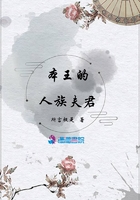Depending on their physical attributes, some crops are more suitable for interplanting than others. Any crop which is suitable for interplanting may, of course, be planted singly at a lower planting cost per crop area. Meticulous care must be provided when planting or harvesting a crop between rows. On the other hand, any crop may be interplanted, but we are interested only in those which had been interplanted in Taiwan. Not all the "inter-plantable" crops were clearly marginal crops added for faster crop rotation. For the present purpose, I eliminate sweet potatoes, peanuts, barley, and Indian corn. Though these crops were interplanted on some farms, they were largely planted singly and were commonly grown.[9] Next, we eliminate sugarcane and tobacco. These two crops were largely interplanted; but the Taiwan Sugar Corporation, a government enterprise, grew the greatest portion of the cane crop, and tobacco planting was regulated by the government.[10] Remaining are five other interplanting crops — oriental pickling melons, cucumbers, watermelons, potatoes, and eggplants. With a higher tenant cost constraint allowed under the share restriction, the higher total yield obtainable from the given land through interplanting made these crops an "ideal" choice as marginal crops on tenant farms.
The five crops cited above also serve to illustrate the utilization of space in interplanting. First, the air space above the ground is utilized by combining cucumbers and eggplants:
Cucumbers are usually interplanted with eggplants on the ridge of the field. Between every two ridges lies a ditch for drainage. Bamboo sticks are placed on each side of the ridge and are tied together at the top. The vines of cucumbers grow on the bamboo sticks, thus making use of the space between ridges.[11]
Second, the utilization of ground space is seen in the relaying of watermelons and oriental pickling melons. Before the initial crop is harvested, the crawling vines of these melons are such that the fruit can be strategically placed. And third, the unoccupied soil space underground can also be utilized. Potatoes, though uncommon in the Chinese diet, have the advantage that they can be planted six inches deep.
These five crops are listed in table 6. In this table, the prefecture groups are listed in column 2, with their percentage changes in crop areas in column 5, and the percentage changes in yield per crop hectare in column 8. In general, we find that (a) increases in crop areas occurred more significantly in prefecture groups I and II than in III, (b) the yield per crop hectare declined in groups I and II, and (c) the yield per crop hectare increased in group III.
Interpretations for (a) and (b) above are the same as those for citronella. To repeat, the increases in crop area were more significant for marginal than for intramarginal crops. The exhaustion of suitable interplanting land margins, and perhaps the generally poor planting organization generated by the high rotation rate,contributed to the decrease in crop hectare yield.[12] The implications for the marginal products of farming resources are the same as before. Since in group III there were mainly farms unaffected by the sharing restriction, farming resources other than land were drawn from this group to groups I and II. Thus, a crop which had previously been interplanted might now be grown singly, resulting in a rise in yield per crop area as discerned in (c). This also confirms our prediction that output responses in owner and tenant farms move in opposite directions under the share restriction.
Crops of the Seasonal Margin
Perhaps the most powerful confirmation of my hypothesis is found in a third type of marginal crop: vegetables. The relatively large crop variety on record allows us to detect some definite patterns of choice under the share restriction. Owing to the tropical climate in Taiwan, most vegetables are grown in winter —not that vegetables cannot be grown in other seasons, but in other seasons farmers find more lucrative crops to grow.[13] Under a free market, in the short winter season (December to March) farmers cultivate small plots of land as vegetable "gardens." Only a small portion of the better land (usually paddy fields) is chosen for vegetables because the cost required to cultivate them is exceptionally high.[14] The greater portion of land is either left idle, used to grow green manure at very low planting cost,[15] or used to grow wheat and Indian corn in the appropriate fields.
The relatively high cost of planting, associated with the relatively high market value of vegetables,[16] together with the idle time margin in which they could be grown, made them among the preferred choices as marginal crops under the share restriction. As is shown in table 3, the crop area of vegetables increased the most of all crop classes, reaching a maximum increase of 31.7 percent in 1951.[17]
In table 7, the names of all vegetables on record are listed in column 1. They are ranked in descending order according to the percentage changes in crop area (column 4). The major prefectures contributing to the percentage changes in crop area (increase or decrease) of each vegetable are listed in column 8. They are all prefectures belonging to groups I and II, with Taichung and Taipei (group I prefectures) being the overall major contributors. With the exceptions of vegetable items 1, 9, 13, and 14, for which the crop hectare yield could not be computed, the percentage changes in crop hectare yield are listed in column 7. As is shown, the crop hectare yields for all but two crops (garlic and wax gourd) decreased.[18] Our interpretation is the same as before: the gradual use of less suitable land, the urgency of the time margin which must be released for common crop plantations, and perhaps for some the unfit season, all contributed to the diminishing returns to tenant input resources in cultivating additional crop hectares.[19] Over the same area of (physical) land, the higher total yield generated by a faster rate of planting implies that the marginal product of land under tenant cultivation was higher than elsewhere.















